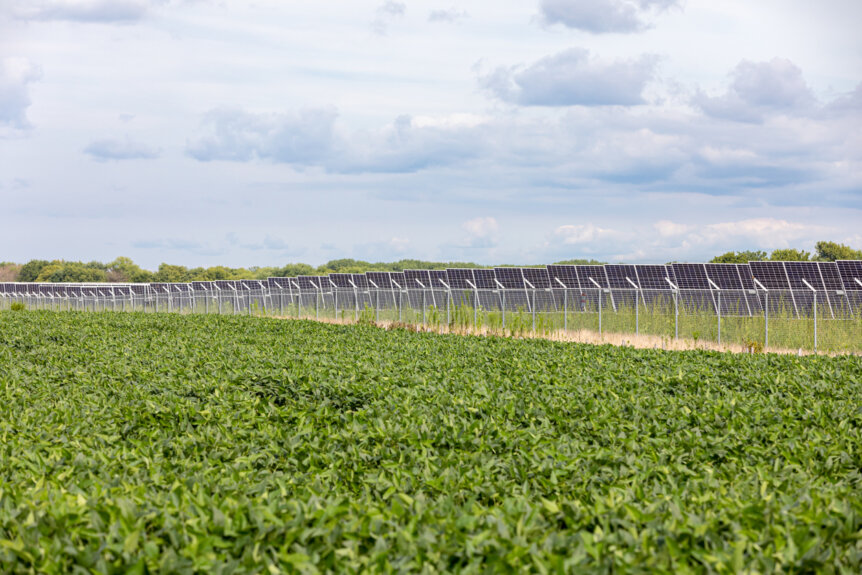Solar energy projects offer farmers and ranchers a unique opportunity to diversify their income streams. However, before diving into a solar lease agreement, it’s crucial to understand the intricacies involved. In this first part of our guide, we will explore key aspects of solar lease agreements that every farmer and rancher should consider.
- Understanding the Structure of the Agreement
Solar lease agreements come in various forms, but they generally fall into two categories. The first is an option agreement, where the developer has the right to assess the viability of the solar project before entering into a lease agreement. The lease terms are typically negotiated at the time of the option agreement. The second approach involves skipping the option agreement and moving straight to a lease. This type of lease often includes a development phase where the project’s viability is assessed, and the developer has the right to terminate the lease at the end of this phase. Regardless of the structure, solar leases typically encompass a construction period, an operation period, a renewal period, and a cleanup phase, each with its specific rights, obligations, and compensation structures.
- The Length of the Lease
Farmers and ranchers must carefully consider the duration of the lease. Solar leases can extend for more than half a century, potentially affecting multi-generational family farms. Assess the impact of the lease on your property, including environmental concerns, farming productivity, eligibility for government programs, and the needs of future generations. Keep in mind that solar leases typically run with the land, potentially binding future sales or estate succession.
- Due Diligence on the Developer
Before committing to a long-term relationship with a solar developer, conduct due diligence to ensure their legitimacy and reputation. Check the developer’s online presence, including reviews and complaints, confirm their legal registration, and seek input from neighbors and the community to gauge their experiences.
- Authority to Enter into the Lease
Ensure you have the legal authority to enter into the lease. This may involve verifying ownership, obtaining consent from co-owners, reviewing business entity or trust documents, and addressing any existing property encumbrances like mortgages, leases, or easements.
- Compensation under the Lease
Carefully review the compensation terms in the lease agreement. Payments can be in the form of lump sums or periodic per-acre payments during different phases of the project. Consider the duration of each phase and negotiate for fair compensation, including escalations to account for inflation. Explore additional compensation or reimbursement options, such as covering professional expenses or tax increases resulting from the project.
Stay tuned for Part II of our guide, where we will delve further into the rights, obligations, termination, cleanup, and dispute resolution aspects of solar lease agreements. It’s essential to have a comprehensive understanding of these factors to protect your interests as a farmer or rancher in the realm of solar energy projects. Whether you work with an attorney or review the agreement yourself, careful consideration of these issues is crucial.
- The Rights and Obligations of Each Party
As you navigate a solar lease agreement, it’s imperative to understand the rights and obligations it grants to both you as the landowner and the solar developer. Pay particular attention to how the lease affects your land and any adjacent properties you own. Solar leases often grant the developer an easement for solar access, potentially allowing them to remove trees or other obstructions on your land or nearby property if they interfere with sunlight access. To safeguard your interests, consider requesting a catch-all reservation of rights clause in the lease, which specifies that any rights not explicitly granted to the developer are reserved for the landowner.
- Termination and Cleanup Obligations
Solar leases often have asymmetrical termination provisions, giving the developer the flexibility to terminate the lease while limiting the landowner’s ability to do so. To protect your interests, seek to include provisions allowing you to request damages or specific performance of lease provisions in cases where you’re not permitted to terminate. Additionally, insist on robust cleanup obligations for the developer. This should encompass the removal of debris post-construction and the restoration of the property to its original condition at the end of the lease. Depending on your location, local or state regulations may dictate specific cleanup requirements.
- Disputes
Preparing for the worst-case scenario is essential when dealing with solar lease agreements. Ensure that any dispute resolution mechanisms in the lease favor your interests as the landowner. Specifically, request the removal of any waiver of the right to a jury trial and any provisions that waive your right to appeal an arbitration or dispute award. By maintaining these rights, you can better protect yourself in the event of disputes or conflicts that may arise during the term of the lease.
In conclusion, solar lease agreements are long-term contracts with far-reaching implications for landowners and their successors. Due to the complexity and variability involved, it’s highly recommended to consult with an attorney experienced in agricultural law when negotiating and reviewing these agreements. Whether you choose to work with a legal professional or take on the task yourself, ensure that you thoroughly consider each of the issues discussed in both Part I and Part II of this guide. Protecting your interests as a farmer or rancher in the realm of solar energy projects is paramount, and a well-structured lease agreement is your key to success.

